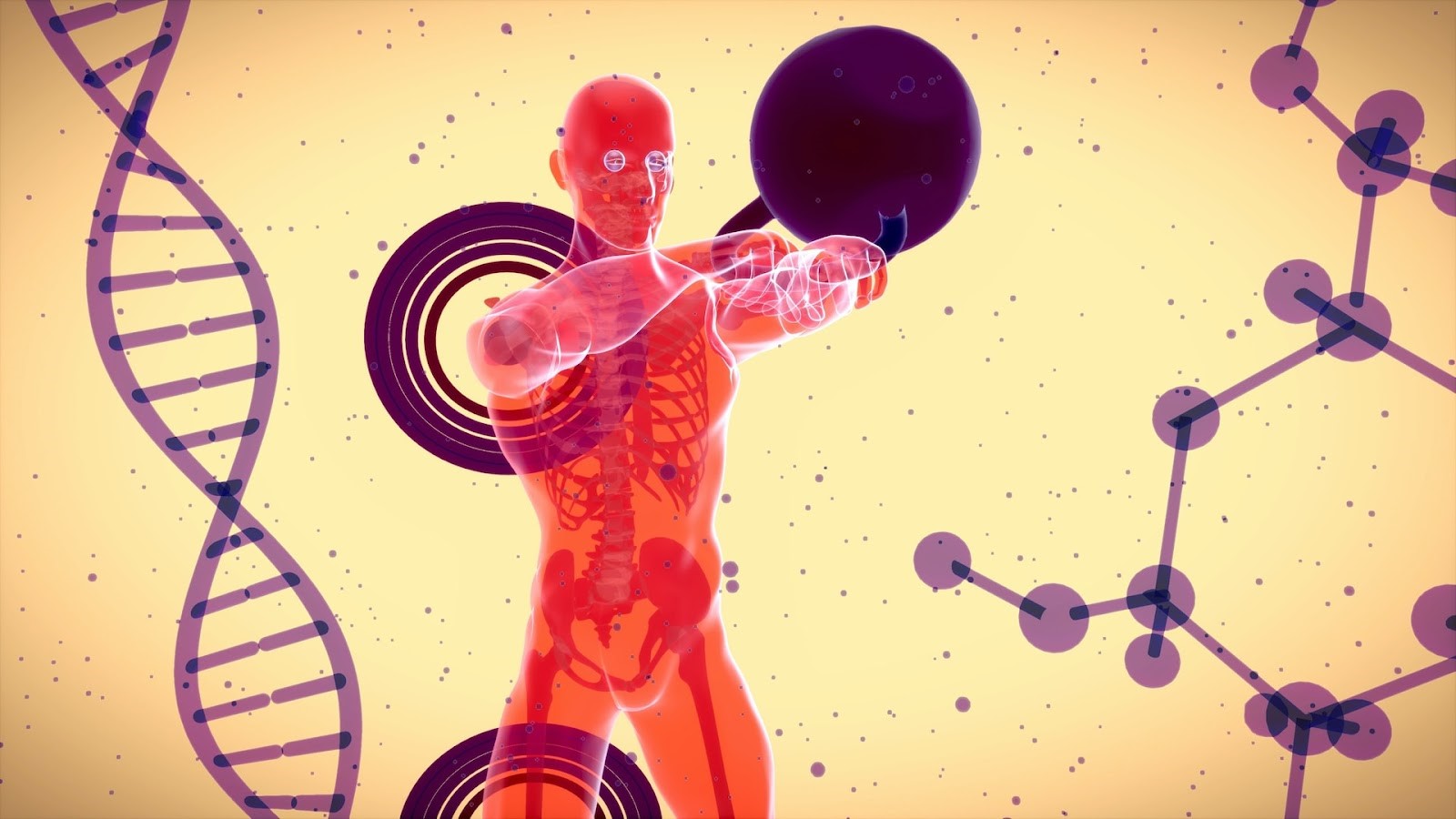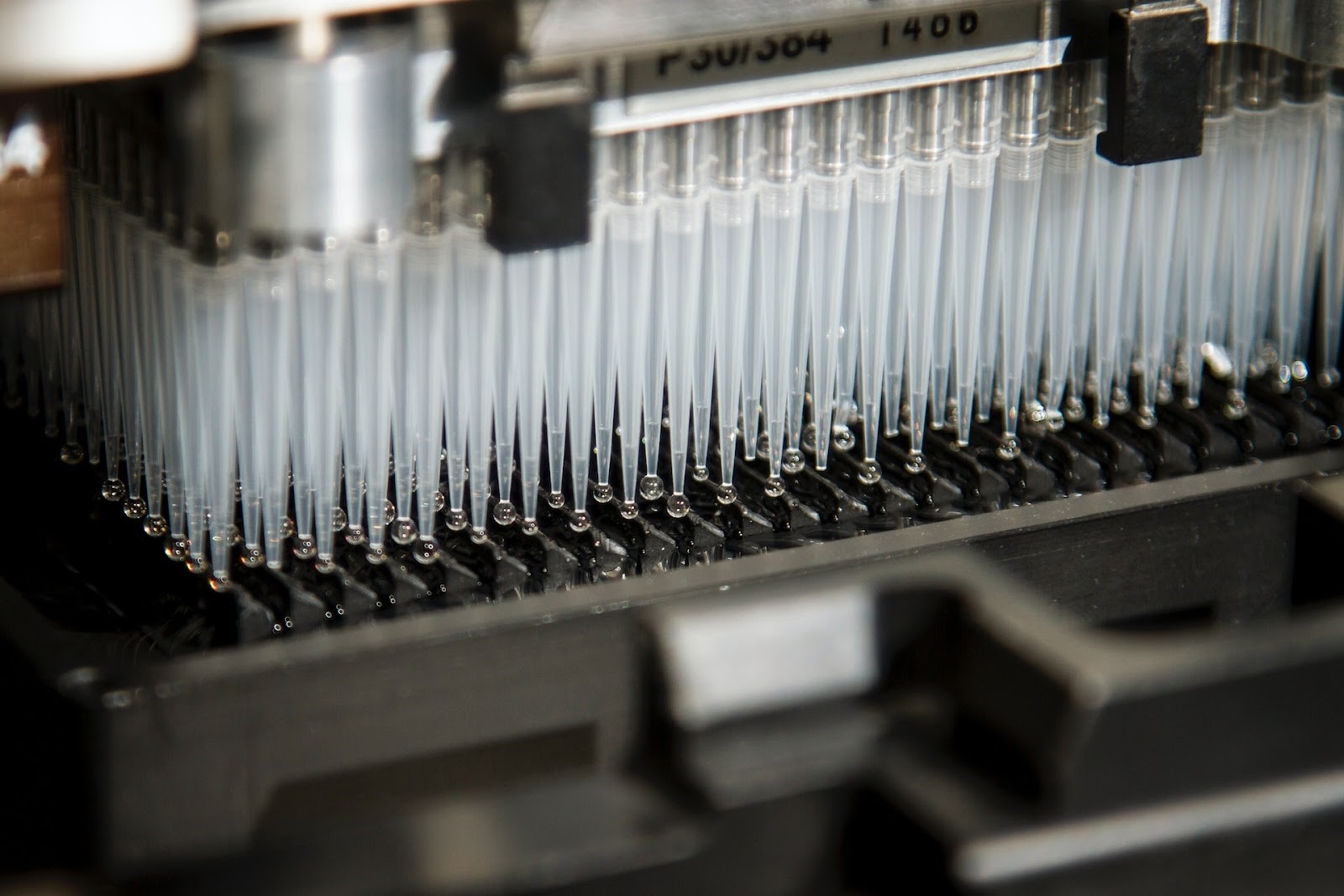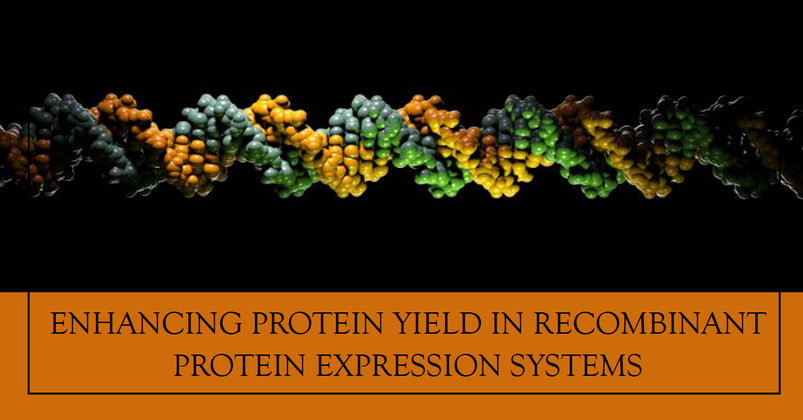Enhancing Protein Yield In Recombinant Protein Expression Systems
Jan 18th 2024
Recombinant proteins are employed extensively in biological and medicinal research. The expression of recombinant proteins has become increasingly popular due to the development of easy methods available for commercial use. Most importantly, it has dramatically increased the amount of proteins that can be studied structurally and biochemically. Because each protein is unique, purification methods and techniques must be developed for each specific protein while keeping the protein's intended application in mind.
We discuss the numerous parameters that influence protein expression systems and how to modify them to improve their yield in different systems.
What Exactly is a Recombinant Protein?

Photo by julien Tromeur on Unsplash
A recombinant protein is described as "a customized or modified protein encoded by recombinant DNA." A plasmid encoding the desired gene in a suitable expression vector is expressed in a particular host expression system to produce a certain amount of the protein for scientific study, therapeutic, or diagnostic purposes.
Considerable applications of recombinant proteins include the following:
- Study of biochemical processes,
- Vaccination,
- A three-dimensional examination of the protein and
- Applications in biotechnology and therapeutic practices.
Generating recombinant proteins entails replicating the relevant gene into an expression vector while regulated by an inducible promoter.
However, several variables, including proper protein folding, cell growth traits, and appropriate expression indicators at the transcription and translational levels, are necessary to successfully express the recombinant gene. There are numerous possible uses in biotechnology for recombinant protein display on the bacterial surface; however, this requires a deeper understanding of the targeting motifs typically found on carrier proteins that serve as fusion partners.
Also, picking an expression system requires understanding how much it costs to develop, sustain, and other economic factors.
Expression Systems Used in the Production of Recombinant Proteins

Genetic engineering has made it possible to produce valuable recombinant proteins in bacteria, yeasts, insects, mammals, and even plant cells. This biotechnology is already widely used in medicine, and by 2025, its market value is expected to reach USD 400 billion.
Because every kind of host cell is unique, it'snot uncommon for different protein expression methods to produce recombinant proteins with varying biological activity and stability levels. Glycoproteins comprise over fifty percent of human proteins and about a quarter of industrial recombinant pharmaceutical proteins. To extract the most out of these recombinant proteins, eukaryotic cells are usually needed as hosts for glycosylation.
While most commercial biosimilars are manufactured using Chinese hamster ovary (CHO) cells, the expression of therapeutic recombinant proteins is constrained by the vulnerability to feedback inhibition of animal host cells. Furthermore, high manufacturing costs from pricey serum or growth factors and biosafety issues from prevalent animal infections have prompted scientists to pursue nonanimal-derived eukaryotic cell expression methods. Due to their favorable characteristics, including low manufacturing cost, high biosafety, and protein post-modification features, plant cells are preferred for synthesizing pharmaceutical recombinant proteins.
Plant cell expression systems have gained international interest due to the effective expression of numerous biopharmaceutical proteins, such as therapeutic proteins, antigens, and antibodies, currently undergoing clinical studies. Yet, the bacterial expression system remains the leading system at the commercial level.
In our labs at Biomatik, we work with the well-known E. coli system. To generate high yields of recombinant proteins, we must constantly rely on protein expression enhancement techniques.
Bacteria Expression System (BES)
When it comes to producing recombinant proteins, the bacteria Escherichia coli is among the most common hosts. While the bulk of recombinant proteins are created in the cytoplasm of E. coli, disulfide-bonded recombinant proteins are frequently synthesized in the periplasm.
An oxidizing habitat and the resident disulfide bond formation (Dsb)-system can be leveraged to enhance the appropriate disulfide bonding by directing these proteins to the periplasm. Using the periplasm for recombinant proteins with disulfide bonds is better, but the targeting problems of crossing the cytoplasmic barrier can significantly reduce periplasmic yields.
Let's look at the factors and conditions involved in protein expression optimization in bacteria protein systems.
Effects of Protein Sequence and Gene on Solubility and Expression
A prevalent factor contributing to the non-expression of heterologous proteins is the existence of "strange" codons within the mRNA of interest. It is possible to circumvent this codon anomaly through codon-enhanced gene production. One benefit of gene synthesis is that it lets you change the gene's codon bias to work better with the hybrid host.
Expression batches boosted with uncommon tRNAs can surmount the codon anomaly inherent in the recombinant gene for E. coli.
Both expression yield and solubility can be influenced by the residues at the beginning and the end of the target domain. By analyzing the protein's structure and functions, we can find the best places to build the protein domains. By fitting the sequence of the protein of interest onto a homologous protein structure, it is possible to ascertain the suitable domain borders for a protein whose domain structure is unknown. If you don't have access to a homologous protein complex, you should use the forecast of secondary anatomical parts.
Effect of Vector on Solubility and Expression

Photo by National Cancer Institute on Unsplash
Certain parts of the DNA sequence, like the Shine-Dalgarno box, promoters, regulatory sequences, transcriptional terminators, sources of replication, and more, control the translation and transcription of the desired gene. Furthermore, selection elements are incorporated into expression vectors to facilitate plasmid selection across the target cell. Including a fusion tag is another essential part of the vector of E. coli expression.
The downstream application and protein target type should be taken into account when choosing a promoter framework. When working with potentially harmful proteins, it's wise to select promoter systems with weak levels of basal output. On the other hand, a more potent promoter must be chosen for the highest possible protein yield improvement. One option to consider for proteins prone to aggregation is to use a cold-shock promoter, allowing expression to occur at cooler temperatures.
Proteins from bacteria and other organisms that are bigger usually fold over longer periods and stick together. In E. coli, folding catalysts and protein chaperones can be employed to prevent proteins from sticking together while making folding easier. Two proteins, one encoded on the target plasmid and the other on an independent plasmid, could be co-expressed.
Fusion tags are attached, at the genetic level, to specific proteins, making them more soluble or easier to find and purify. You usually must try a few different ones to know which fusion tag produces the most soluble proteins. Additionally, the positioning of the tag, which can be positioned at the C-terminus or N-terminus of the protein of interest, is of utmost importance.The majority of fusions involve the N-terminus, and there's an advantage to this type of fusion: it usually improves the expression of soluble protein compared to their C-terminal counterparts.
Considering that the availability of a fusion tag may hinder the biological function of the recombinantly synthesized protein, it could prove useful to enzymatically eliminate the tag following the purification of the fusion protein. To facilitate the elimination of the tag, it is advised to incorporate a division section for a protease unique to a given sequence.
Effect of Host Stocks on Heterologous Protein Expression

The development of hosts of bacterial variants can facilitate heterologous protein synthesis. Some E. coli variants sold commercially are engineered to produce proteins with particular characteristics, such as those that are fragile to proteolysis, have unusual codons, or need disulfide bonds.
Protease-deficient variants, like the E. coli BL21 or other variants of this strain, are recommended for proteins vulnerable to proteolytic destruction. Amino acid misincorporation, premature termination of translation, and translational stalling can occur when the codon frequency of the target gene and the expression host are different. If the unusual tRNAs are supplied during expression, this disparity becomes a thing of the past. An enhanced output of genes containing peak frequencies of unique codons can be enhanced using bacterial strains with plasmids that encode rare tRNAs.
Improving the solubility of folded proteins containing disulfide bonds and aiding in the production of cytosolic disulfide bonds can be achieved through expression in host strains that include glutathione reductase (gor) and thioredoxin reductase (trxB). E. coli periplasm is very oxidative and favors the production of disulfide bonds; targeting the produced protein in this environment provides an alternate technique for expressing proteins containing disulfide.
Increasing Protein Solubility via Regulating Expression
Protein aggregation before folding can occur using potent production promoters in conjunction with high concentrates of inducers. The freshly generated protein will have more time to fold before aggregating if the transcription and translation rates are reduced. To improve protein solubility, you can adjust the following typical aspects of expression.
Temperature: Recombinantly produced proteins will be more soluble if the temperature for production is lowered to 15-25°C. Reduced protein collection, translation, transcription, and cell division rates result from slowing down cellular processes at lower temperatures. Proteins vulnerable to proteolysis have their breakdown slowed when the temperature for expressing the specific protein is lowered.
The potency of the initiator: The solubility and activity of recombinant proteins can be enhanced by reducing the transcription rate, which is achieved by lowering the concentration of the induction agent.
Medium of choice: Most recombinant protein production cells are cultured via batch culture. Incorporating all necessary nutrients into the growing media at the outset is essential.
Optimizing the Purification of Proteins
- Immobilized metal affinity chromatography (IMAC) should be used as the first stage in the purification process.
- Utilize gel filtration or size-exclusion chromatography when further purification is required. When necessary, ion exchange chromatography should be used as the last step toward "purifying."
- It is possible to delete the affinity tag to achieve additional purification and reduce the number of non-original sequences present within the recombinant protein.
Developing the Best Expression System Possible for E. coli

In light of the scientific community's current information, it's safe to suggest developing an expression system that is ideal for E. coli. It should consist of DNA components that facilitate effective transcription, stabilize the transcript, enable robust translation, yield genuine recombinant proteins free from contaminants by truncated or extended variants, maintain solubility, and aggregate to approximately 20% of the overall cellular protein.
This type of expression incorporates the consensus promoter acknowledged by the housekeeping promoter s70, and it can undergo additional improvement with the incorporation of a UP element. The induction of readthrough transcription into adjacent genes is impeded by the tandem arrangement of two robust transcriptional terminators devoid of any factor.
Inverted repeats found at both ends of the transcript stabilize the transcript itself. These repeats can create stem-loop structures, which hinder endonuclease activity at the 5' end and exonucleolytic destruction from the 3' end, but they do not inhibit translation. Finally, a resilient Shine-Dalgarno sequence, an AUG start codon 8bp downstream, and the prolonged UAAU stop codon ensure effective translation. Folder chaperones are expressed simultaneously as the new polypeptide chains to help them fold.
However, it is necessary to point out the conclusion that all recombinant proteins do not have a single expression method that is ideal for their production. Each protein presents its unique set of challenges. To achieve a high degree of synthesis, optimizing the process in every instance by systematically adjusting the various parameters is necessary.
Conclusion
Scientists employ many strategies to regulate the expression of proteins for biotechnological, medicinal, and experimental purposes. Unlike DNA, which is pretty easy to make, proteins can only be made from complicated mixtures of cells or living tissues. Efforts to produce a recombinant protein via a specific expression system may rapidly go from a satisfying and relatively quick operation to a stressful and time-consuming process. With the steps above, researchers and scientists can overcome these hurdles using recombinant protein expression services.
Biomatik offers an extensive catalog of proteins to different clients with over 12 years of recombinant protein expression in E. coli. Other services you can trust with Biomatik include polyclonal antibody production, peptide synthesis, antibody sequencing, and gene synthesis. Contact us through email if you need further information about our services or have any inquiries.

